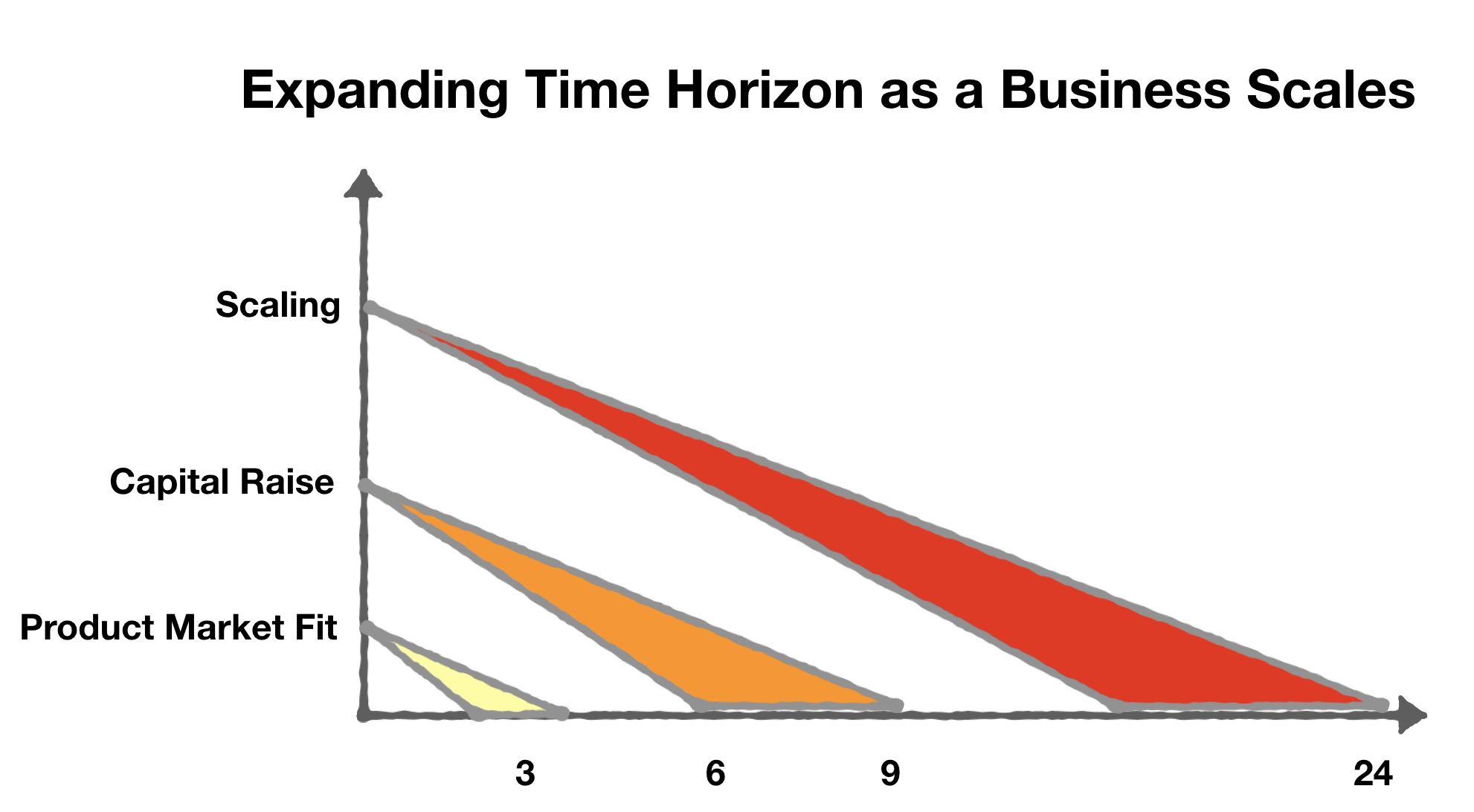2 minute read / Feb 8, 2018 /
Expanding Your Time Horizon To Scale Your Startup
When a startup takes form, the first weeks and months and years are spent furiously. The team assembles itself. The lightbulb illuminates. It is formed and reformed again and again as customers supply feedback. Eventually the team hews the right product. The startup raises capital. Then the team returns focus to hiring, evolving the product, and closing customers. However, continuing this way isn’t the path to huge scale. There’s a critical step missing.
In the early days, the founders plan each week as it comes. Customer meetings, product releases, investor pitches. Three yards and a cloud of dust. Get up. Fight for another three yards. Every damn day.
Suddenly, the business is working. The founders have hired department heads, who manage employees. At some point, those managers manage managers too. There’s enough breathing room to go on vacation. When the founders return, the company has carried on in their absence. Liftoff. What a feeling.
Plowing into the tactical day-to-day is instinct, but it’s a mistake. It’s time to look ahead. Three months ahead at first. Then six months, then twelve months. Then two years.
What will the business need in six months? A new VP of customer success. New features to move upmarket. Relationships with research firms. New office space. A larger balance sheet. A key partnership.
And in twelve months? To have built a brand. To recruit 100 people. To have raised capital. To have developed a longer term product roadmap. To understand the competitive dynamics in the market.
To answer these questions, the team must look beyond this today’s one-on-ones and this month’s engineering milestones this quarter’s sales pipeline. They must expand their time horizon. They must anticipate what the business will need a few quarters out. Then they must plan to achieve those objectives. And start working on them today.
As the business increases it scale, the management team needs to plan further and further out in time. Broader ambitions require longer term planning. And then it’s back to the cotidian grind. Hitting this week’s growth. Decreasing customer service response times.
Open water swimmers pick a point to guide them as they swim. Then they immerse themselves in the water for a 20 or 30 yards. When they pick their head up again, they correct a bit and then plunge back into the task at hand. They seesaw between long term planning and short term execution. It’s the same with a startup.
